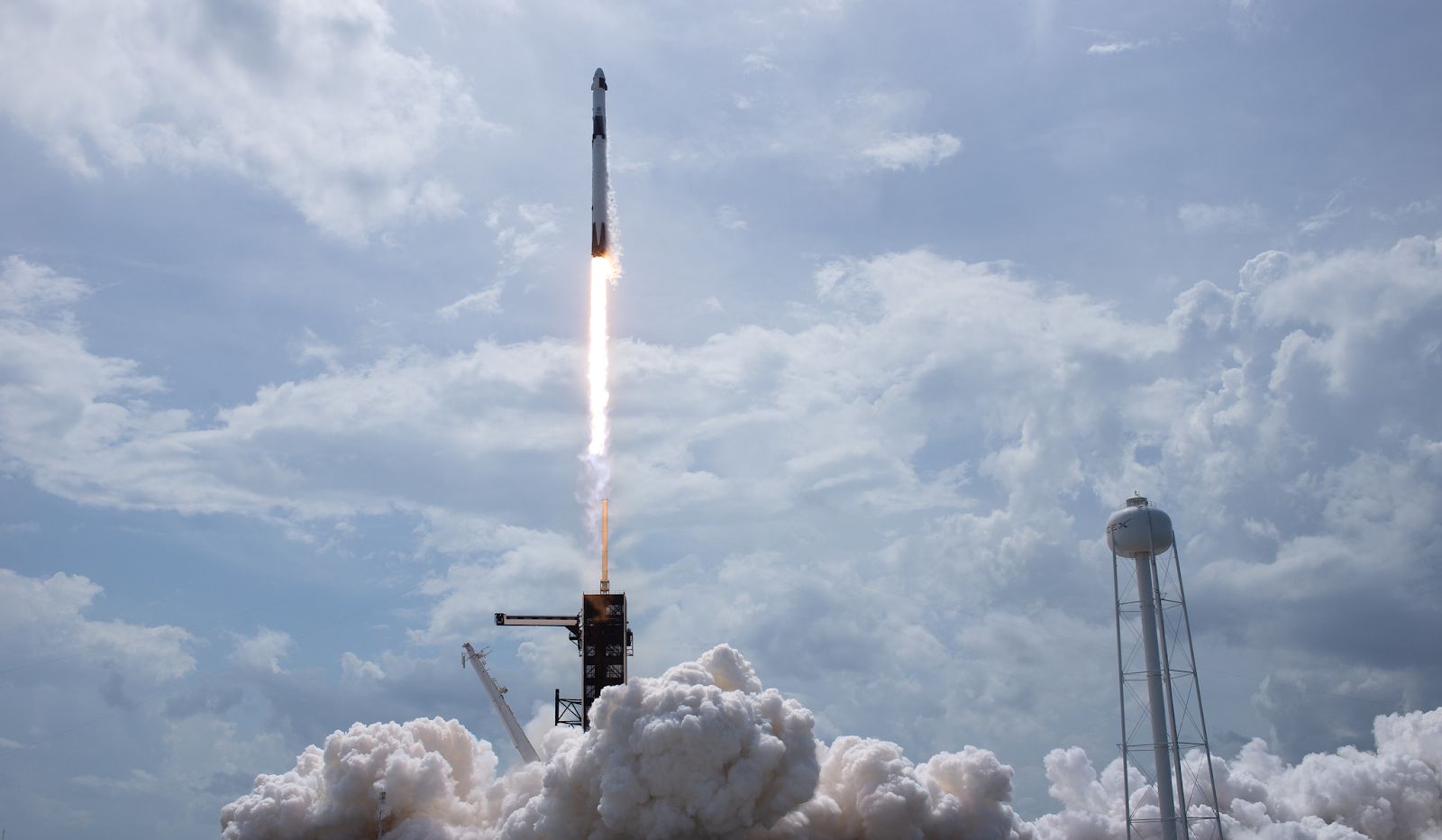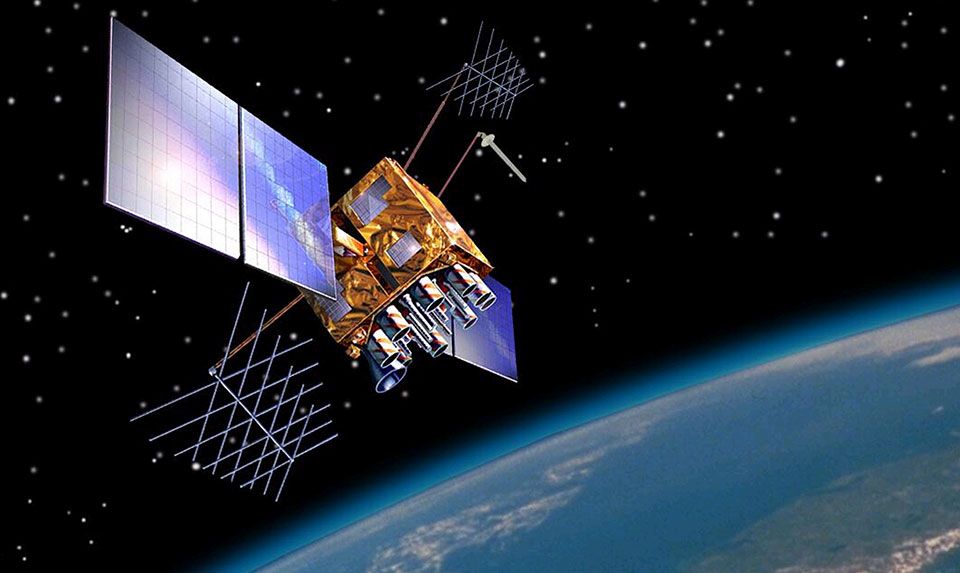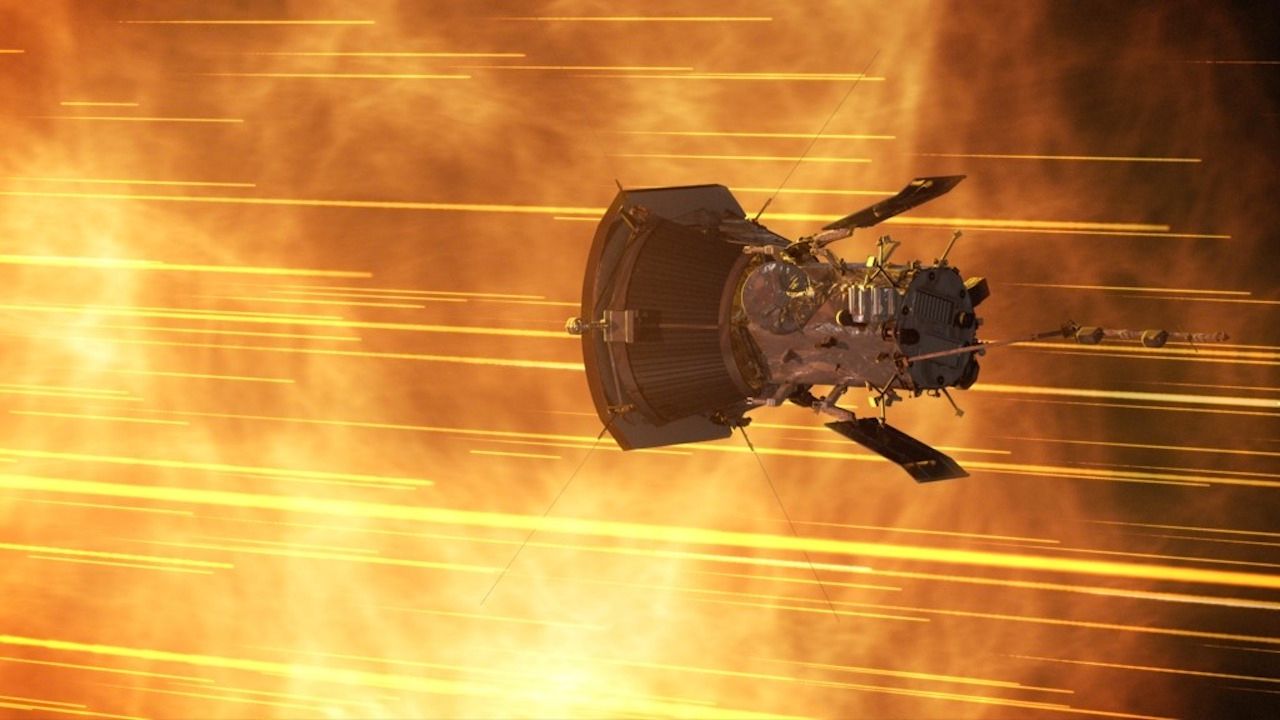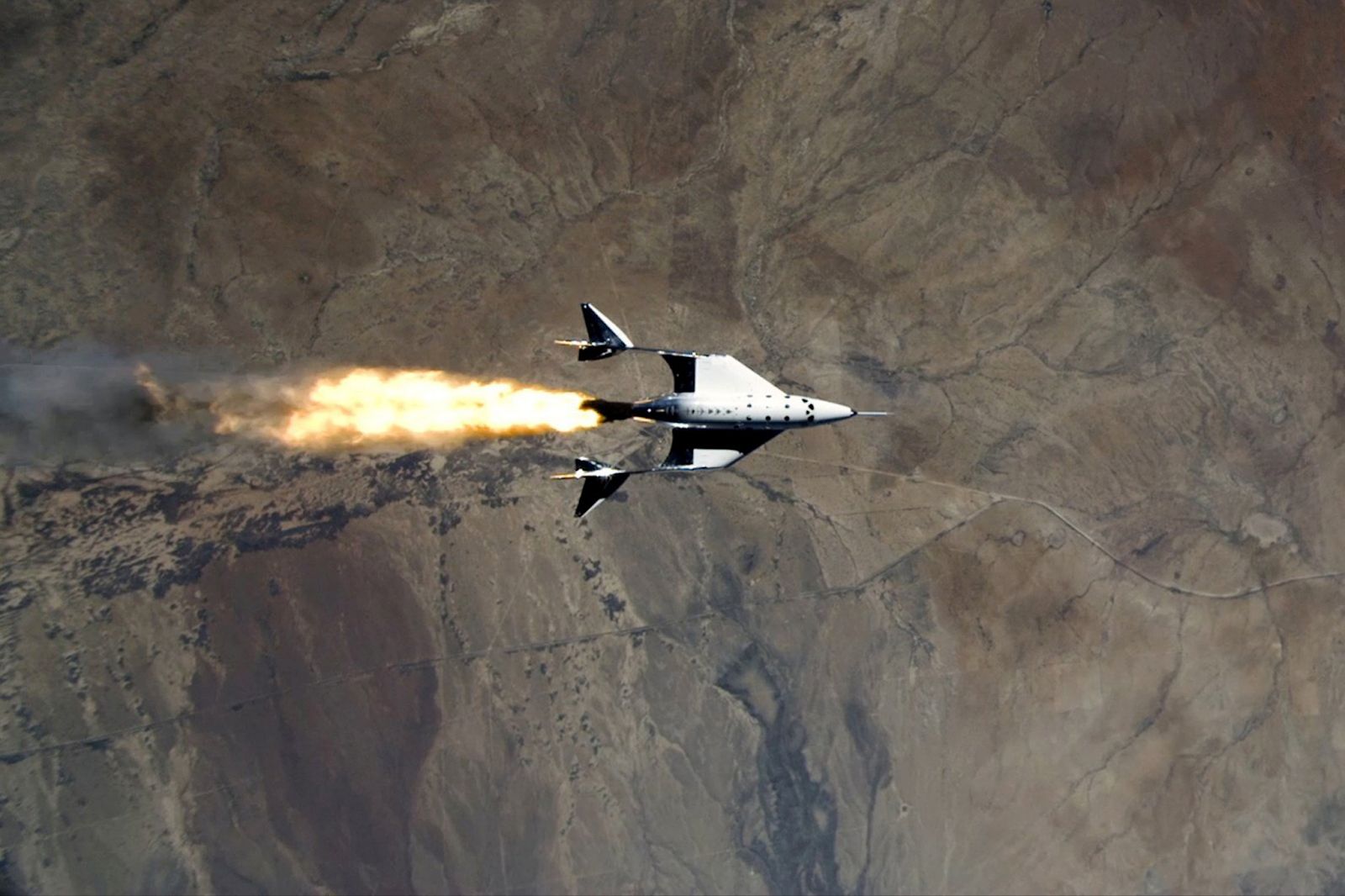Why Space? The Case For Spaceflight and Exploration
by Hugo Filmer, Form VI
14 min. read — March 24, 2022

I have written a fair number of articles for the Priory Press on spaceflight, and there is no doubt that in recent years there has been a boom in interest in space exploration. Public excitement has been aroused by rapid progress, and many companies have sought to capitalize on the growth of the industry as a whole, which the Bank of America says could reach $1.4 trillion by 2030. Development is happening on all fronts: in human spaceflight, especially to deep-space destinations like the moon and Mars, in reusable launch vehicles, and in a new generation of cutting-edge and low-cost scientific missions.
Despite this, there seems to be a growing chorus of voices advocating for severe reductions to spending on spaceflight, both at a federal and commercial level, especially in America. To be clear, this is nothing new; in 1970, as the Apollo program landed men on the moon, Gil Scott-Heron was recording “Whitey on the Moon,” a song arguing that spending on space was racist and unjustified. However, the increase in interest alongside the greater commercialization of space today has renewed interest in the same old arguments against space exploration, now with a twist of anti-capitalist fervor. In this article, I want to defend the position that investment in space is valuable, and that spending there is not a waste but a great boon to all of us, whether we realize it or not.
Contrary to some public perception, space exploration is extremely useful to us. To begin with, technologies developed by NASA and private companies while pursuing spaceflight improve our daily lives. The digital, miniaturized cameras in every smartphone today were developed by NASA for spaceflight applications, as were water purification systems that save lives here on earth. Computers were also miniaturized, the first step in the portable laptops and phones we use every day. Improved solar panel designs developed for spacecraft power are now used on earth to provide green energy. While these “trickle-down” technologies developed for space exploration do not alone justify the spending, they show its less-appreciated benefits.
In addition, we rely on technologies only possible via spaceflight today. The American Global Positioning System, which can determine the position of any object on earth to within just two centimeters (given appropriate receiver technology) is used for a variety of civilian and military applications, such as disaster relief coordination, cartography, the development of autonomous vehicles, and cell phone location-finding. This location-finding is particularly important, as it allows emergency responders to quickly and accurately determine the location of an emergency caller. In addition, the navigation systems onboard the aircraft that we fly on and the ships that carry goods to us often depend on GPS. These GPS satellites were first launched in 1978 on Atlas rockets, and the constellation was built up through the ‘80s and became operational in 1990. The constellation is regularly updated even today, offering more reliable satellites and increased precision. Other satellite constellations are similarly important. Images of our planet collected by planetary photography satellites, often from sun-synchronous orbits, give us rapidly-updated, real-time overviews of the situation and enable us to better understand our weather systems, manage fisheries and forests, and plan cities and rural areas; they also aid in conservation efforts. Today, three large space companies are also betting on large, low-earth-orbit constellations of internet satellites. SpaceX’s Starlink, Blue Origin’s Kupier, and OneWeb all promise high-speed internet access nearly anywhere on the globe, connecting people who have previously not been served by land-based internet arrangements.

These benefits come from unmanned satellites placed in orbits relatively near-earth. However, a fair share of the criticism directed towards space exploration is leveled at deep-space missions and human space exploration. How do rovers on Mars, humans on the International Space Station, and orbiters around Jupiter help us? Human spaceflight especially gives us vital information for developing and improving medical technology here on earth: long-duration spaceflight has enabled us to study bone loss, help patients suffering from strokes and motor loss, enabled possible new cancer treatments, and refined gut microbiome treatments. Human access to experiments also makes it easier to study certain physical phenomena in space; we have gained new insight on fluids, plasmas, and on materials science. NASA has even been able to better understand the Bose-Einstein condensate state of matter through study in microgravity on the ISS.
Unmanned probes have been able to make crucial discoveries about the solar system and universe that further our understanding of the distant past. We are not launching probes merely to sight-see or to prove that it can be done. For instance, the Parker Solar Probe has made discoveries about the solar wind and fluctuations in the Sun’s magnetic field, which may even be relevant in protecting earth from the destruction of an intense solar storm. The Curiosity rover has found evidence of water on ancient Mars and indicated that it could support life, giving us clues to the past of the solar system. Galileo found that Jupiter’s moon Europa had a large subsurface ocean, that Io’s volcanoes were ever-shifting and active, and studied Jupiter’s enormous thunderstorms via an atmospheric probe. Is knowledge about our origins and the universe around us not valuable? However, some advocate only the use of robotic spacecraft, claiming that manned missions to deep-space are too expensive and the autonomous explorers do a better job. This is not the case, and sending humans to deep-space for scientific reasons is worthwhile. During the Apollo missions, humans were able to carry out exploration of the lunar surface far faster and more efficiently than robot explorers could have, collecting a wide variety of samples and covering more ground than a rover could. They were also able to deploy scientific payloads to the surface of the moon and operate them, providing an all-in-one package of sorts that would be difficult to replicate without humans. Additionally, human involvement aided in operating the Apollo Telescope Mount on the Skylab space station, compared to a fully unmanned system, and observations could be made more quickly and effectively. It should be understood that probes are not the solution to doing science in deep space: they are precursors to lasting and fruitful human scientific study.

Another common argument against space exploration is that we should not be exploring space until we fix the problems on earth. This position seems patently absurd to me, both for what it entails and for its ignorance of the realities of human development. No one is claiming that we should have stayed away from the oceans until we solved the problems on land, nor are they claiming that we should not have developed aircraft until problems on the surface of the earth were solved. In hindsight, both of these developments have in fact aided us in solving earthly problems. An endless number of similar parody arguments can be run which all reach absurd conclusions. The argument also entails that we will never be able to explore space, because it seems apparent that we will never fix all problems on earth. Given the previous uses and benefits of spaceflight discussed, this position is not reasonable: we have gained plenty here on earth from near-earth spaceflight. In fact, with continued development, we earthlings also stand to gain significantly from deep-space exploration. Some potential applications (and certainly more we cannot begin to imagine from our current state) include collecting fuels for fusion energy on the moon, mining metals rare on earth in the asteroid belt, and expanding the living area available to humans, making room for a higher standard of living for all. Resources that are now scarce will be plentiful. This of course seems very fanciful today, but then again the first boats humans built were small craft capable only of river, lake, or strait travel, limited in durability, capacity, and range. It was not until the modern era that we could reliably cross oceans quickly and carry the huge cargoes we do, and yet commercial shipping is essential to our daily lives and has increased our standard of living. The Wright brothers’ first flight was in a flimsy wood-and-canvas craft capable of carrying a single pilot and lasted only 12 seconds; today almost 10000 aircraft are flying at any given time, and stay aloft for hours at a time, often carrying hundreds of passengers to destinations around the world, bringing economic benefits and yet more standard-of-living improvements. We should not judge the potential of spacecraft by their current capabilities; if anything, their shortcomings indicate that we should invest significantly more in their development. I would not be surprised if, in the future, we regard our current air travel and seafaring ability as quaint and wonder how we ever lived without regular, reliable, and high-capacity interplanetary shipping.
A related objection to the previous one is that spending on space exploration is wasteful, and the money could be better used to help the less fortunate on earth. I believe that I have already partially answered this objection with my discussion of our current-day uses of space, the scientific discoveries we have made because of our exploration, and the future promise it holds. This objection has, however, grown in popularity with the increasing commercialization of space, especially when some of the world’s wealthiest men, like Jeff Bezos and Elon Musk, invest so much in space travel and tourism specifically. To begin with, money spent on space travel does not vanish into the aether: every dollar spent is a dollar earned by someone. When NASA or a private company like SpaceX or Blue Origin spend money, they pay highly skilled workers, who then go on and spend that money themselves. In this way, money flows through the economy. Anti-commercialization commentators often argue that these commercial space companies do not have the noble intentions of governmental bodies like NASA, and only seek to make a profit. But what is a profit but a measure of added utility? If anything, these commercial space endeavors serve more of an immediately relevant purpose than NASA’s scientific study, because customers are willing to pay for the services they provide right now. As an additional argument for spending especially on government space efforts, it may be useful to point out that the United States spends almost 2.3 trillion dollars a year on social programs (based on 2013 figures). This figure includes medical care, food and housing programs, Social Security, and Medicare. Compare this figure to NASA’s yearly budget, which in 2021 was $23.2 billion. This indicates that American spending on NASA is approximately 1% of social spending, or about 0.5% of the federal budget, not exactly a huge competitor to social programs, although most Americans believe it gets far more. A survey conducted by INSIDER suggests that the average American estimates NASA spending to be 6.4% of the federal budget, almost 13 times the actual figure! Even during the height of the space race, NASA’s budget only reached 4.5% of the federal budget. Given the scientific and technological advancements NASA has brought us, and its continual mission success, surely it is worth spending at least such a small amount to secure continued development?
Space tourism especially has become a controversial subject. Detractors argue that it’s nothing more than an expensive joyride, and serves no “practical” purpose, or that it’s an ego contest between privileged billionaires who could be using their money to support humanitarian efforts. It’s certainly true that many humanitarian efforts are underfunded, and that the wealthy could contribute more. But isn’t much of what we do lacking in this so-called “practical” purpose? In 2018, the global film industry was worth $136 billion. Does this expensive entertainment serve any “practical” purpose? Do sports serve a practical purpose that dedicated exercise alone fails to achieve? How about most hobbies? The claim that space tourism is an impractical waste of resources is inconsistent with the way most people live their lives, and, presupposing we fund humanitarian efforts adequately (which is certainly possible, even with healthy spending on spaceflight), I see no problem in these “impractical” activities. Are they not what make life worthwhile for most of us?
There is an additional, related concern that these spaceflight opportunities somehow exacerbate inequality on earth and that only the privileged can participate, which makes them unfair and immoral. To this I respond that spaceflight was once the exclusive domain of technological superpowers able to front the huge amounts of cash to develop the advanced technologies required. Spaceflight has become more egalitarian over the years as the cost of space launch has decreased. In the last decade, 34 countries orbited a satellite for the first time, including Ghana, Bangladesh, and Mongolia, whose first satellites all shared a ride on a SpaceX Falcon 9 in 2017. This number of new spacefaring nations is more than any other decade, and speaks to the increase in egalitarian space access new developments have already brought us.
In the early 1960’s, the Mercury program, which put the first Americans into space and orbit, cost about $1.6 billion (in today’s money), not including the costs to develop the launchers, which were adapted ballistic missiles. Anyone wishing to go to space back then would have had to pay a similar cost for their own development program. Compare this to an “off-the-shelf” suborbital tourist flight of the kind offered by Virgin Galactic or Blue Origin today, not so different in scope from an early Mercury flight, which will run a budding astronaut about $450000, or to a multi-day orbital tourist flight on SpaceX’s Crew Dragon, which is comparable to a later Mercury flight and costs about $50 million per seat. That this space tourism, even if only available to the wealthy today, is feasible in the first place speaks to the strides we have already made in lowering the cost of launch. It is not feasible that the cost of human spaceflight will instantaneously drop from a national expense to one the average citizen can pay. The solution to any inequality these detractors complain about is therefore not a halt in development, but additional development to further cut the cost of space travel. We can either keep space travel where it is today, in a transitory phase where the wealthy can afford it but no one else, return it to the pre-commercialization era of government-only astronauts in space, or work to enable space access for almost anyone by prioritizing further development.

Another argument that occasionally gets brought up against space travel is the potential emissions rocket launches may release. In fact, some Facebook posts have claimed that Jeff Bezos’ suborbital spaceflight released the same amount of carbon dioxide that a small African nation does in a year. However, Bezos’ New Shepherd rocket burns liquid oxygen and liquid hydrogen propellants, producing only water as an exhaust product. While water in the upper atmosphere may contribute to the greenhouse effect to an extent, unfortunately water-only emissions are not the case for most orbital rockets: the majority use kerosene-oxygen propellants, which do combust to produce carbon dioxide, and a small number use solid propellants, which can produce dangerous exhaust products like chlorine compounds and oxides of nitrogen. Thankfully, rocket emissions are a very minor source of pollutants to our atmosphere. An Everyday Astronaut investigation found that launches are responsible for about 0.0000059% of global carbon emissions, compared to the airline industry’s 2.4%. Rockets simply don’t launch often enough to contribute much to the problem of emissions, even assuming a significant increase in launch numbers. Launches could increase a hundredfold or more without rivaling emissions from other sources. Additionally, the level of technological advancement required for a launch cadence that could significantly increase global carbon emissions would almost certainly also provide solutions to offset the increase.
There is also a somewhat more sentimental argument for space exploration. Through deep-space missions, we see human boldness and technological prowess writ large before us. The Apollo moon landings remain a triumph to ingenuity and a symbol of our great hope; anyone alive today can look up at the moon and say we’ve been there. Humans have always been an exploratory species, pushing boundaries and spreading out from our point of origin in Africa to inhabit the rest of the world, from the icy wastes of the Arctic to the dense, sweltering jungles of the Amazon. We are not a species that feels broad satisfaction; our wanderlust has not ended in all the time we’ve spent on this planet. Having explored the frontiers that remain on this planet, we at last have the technology, the ability, the incentive, and the opportunity to turn our eyes skyward, and conquer the frontiers that lie above us. There is no reason why we should leave them untrod just a little longer, pushing the responsibility to some future generation more high-minded than us. We can sit and wait, or we can seize the fire and begin what must eventually be done now. In a thousand years or so, surrounded (if we’re lucky) by the benefits of advanced space travel, we will be utterly confused by those who aimed to halt space progress in its tracks.
I would like to close with one last observation. While earth seems quite vast to us, it’s an unbelievably small fraction of what’s out there. To avoid using astronomically large numbers (pun intended) for describing distances in our solar system, astronomers use the Astronomical Unit as a measure. One AU is the distance from our earth to the sun, 93 million miles (for comparison, the radius of the entire earth is only about 4000 miles). The solar system is 80 AU across, containing an enormous amount of, well, space. And yet, Proxima Centauri, the nearest star to us, is 268770 AU away! There are 63241 AU in a light-year; we have observed galaxies 13.4 billion light-years away. Humans are not capable of understanding the sheer size of the universe, small as we are. Does it not seem quite small-minded to refuse even the meager investment we put into exploring and exploiting the vastness that exists beyond the speck we call home? It’s as if we stand in the midst of an expansive garden, and insist on cultivating and wringing all we can out of a single plant. Will it be easy to develop further spaceflight capability? No. But it is absolutely a worthwhile goal.